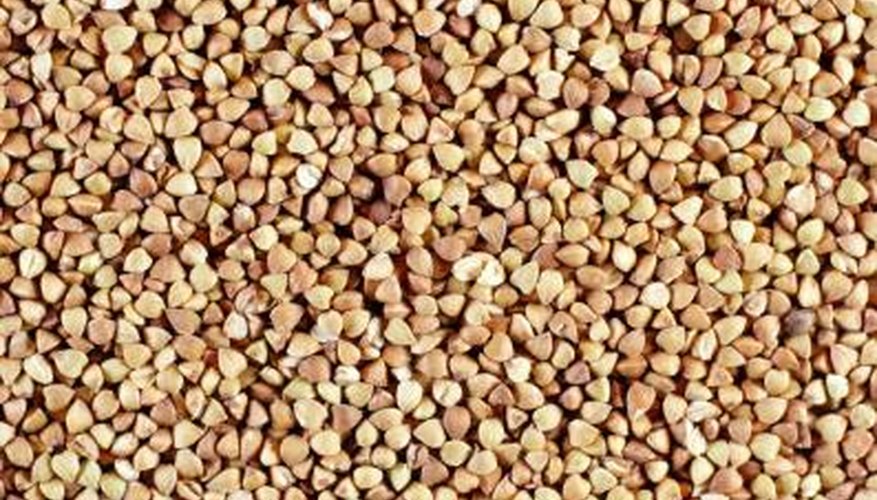Bulgar wheat is made from parboiling, drying and cracking wheat berries. This results in a cereal product that requires only soaking to prepare. With a light, nutty flavour, bulgar is a staple in many ethnic cuisines, including Armenian and Mediterranean dishes, and is probably best known as the key ingredient in tabbouleh salad. Also known as bulgar or bulgher, it can be made from several different wheat varieties, but is commonly made from hard red wheat, according to Patricia Conant of The Epicurean Table. Bread Info suggests that to allow solid root development, you must plant hard red wheat in the fall at least six to eight weeks before the first frost.
- Bulgar wheat is made from parboiling, drying and cracking wheat berries.
- Also known as bulgar or bulgher, it can be made from several different wheat varieties, but is commonly made from hard red wheat, according to Patricia Conant of The Epicurean Table.
Clear an area in your yard for planting. Remove weeds, branches, rocks and rake debris. Till the soil by turning it over with the shovel. Level the turned soil and rake the surface until smooth.
Use the shovel to dig long, narrow trenches spaced 6 inches apart. Apply 1 inch of an organic manure or compost if the soil is poor or has been previously planted. Dig the aggregate into the soil to incorporate.
Broadcast the wheat seeds into the furrows. Sprinkle 85.1gr of seeds for every 100 square feet of garden plot. In smaller gardens, aim for approximately one seed per square inch of plot. Cover the seeds by raking soil over them. This prevents birds and rodents from eating the seeds.
- Use the shovel to dig long, narrow trenches spaced 6 inches apart.
- Cover the seeds by raking soil over them.
Water the furrows well immediately after planting. Water once a month thereafter if the soil appears to be too dry. Wheat does well in dry conditions, and watering is rarely needed. Some climates need no watering at all, especially if they receive rain, while others will need an occasional watering. Water the base of the plants only; avoid getting water on the stalks.
- Water the furrows well immediately after planting.
- Wheat does well in dry conditions, and watering is rarely needed.
Weed your wheat plot whenever weeds pop up. Weeds compete with wheat for moisture and nutrients and create opportunities for diseases and pests.
Harvest your wheat when the stalks begin turning gold but still have a hint of green left in the stems. A good test is to bite into a wheat berry. If the berry is hard, but changes to a gummy texture when chewed, it is ready for harvest. Use the scythe to cut the stalks for storage or for bulgar preparation.
TIP
Most commercial wheat is sold in large quantities. For a home garden, visit your local natural foods store. Raw wheat berries are sold in bins in quantities more appropriate for smaller plots. Plant winter wheat in late fall between the end of September and the middle of October. Plant spring wheat in early spring in areas where cold weather will affect wheat growth.
